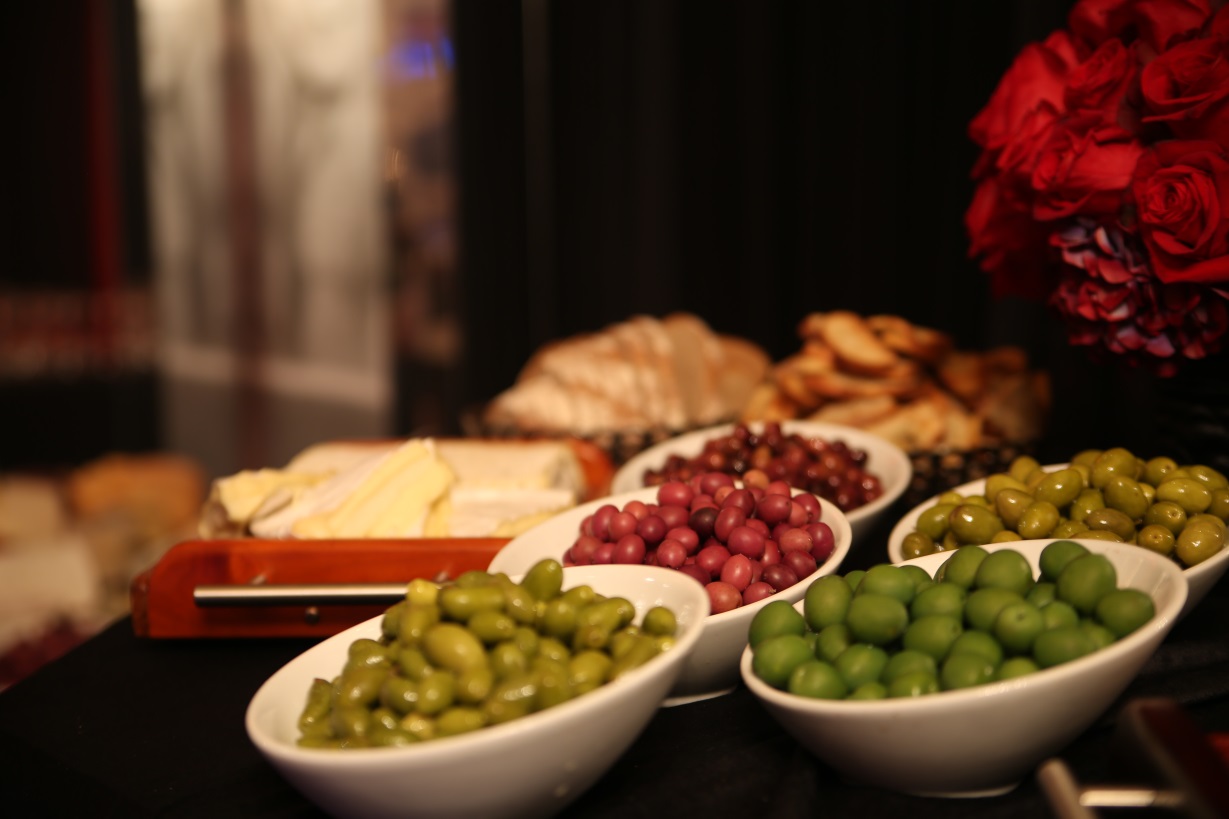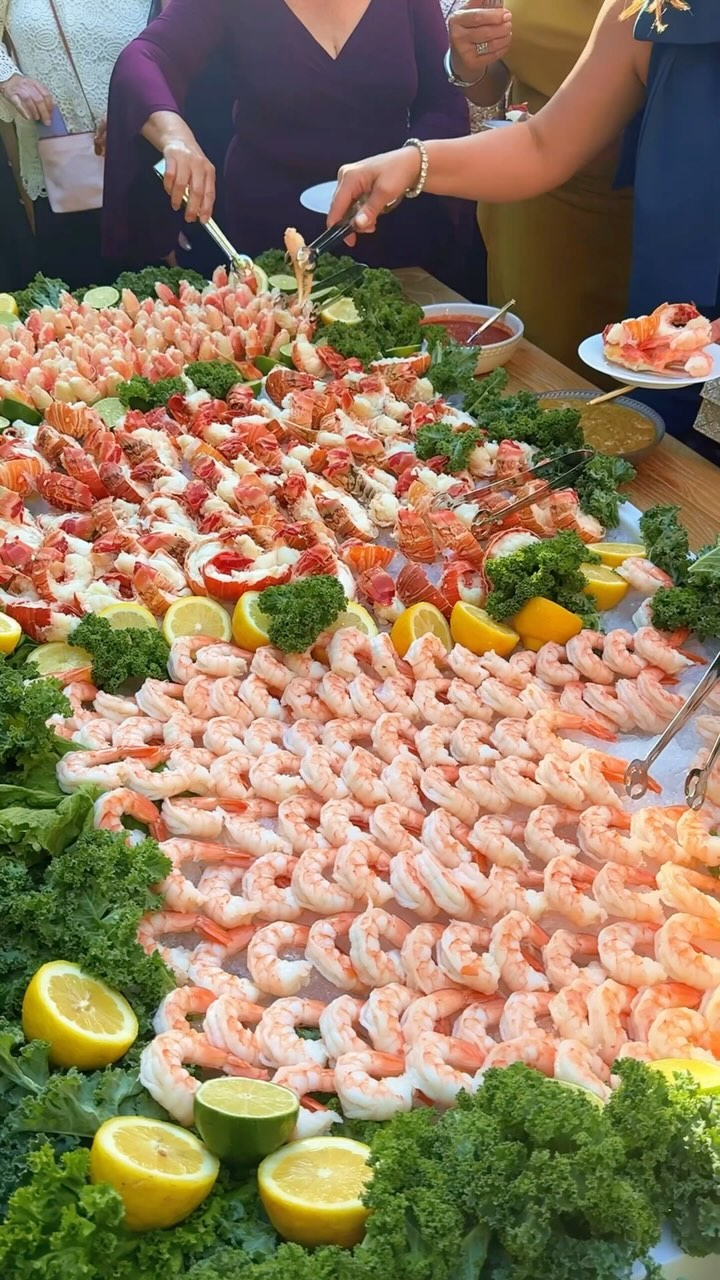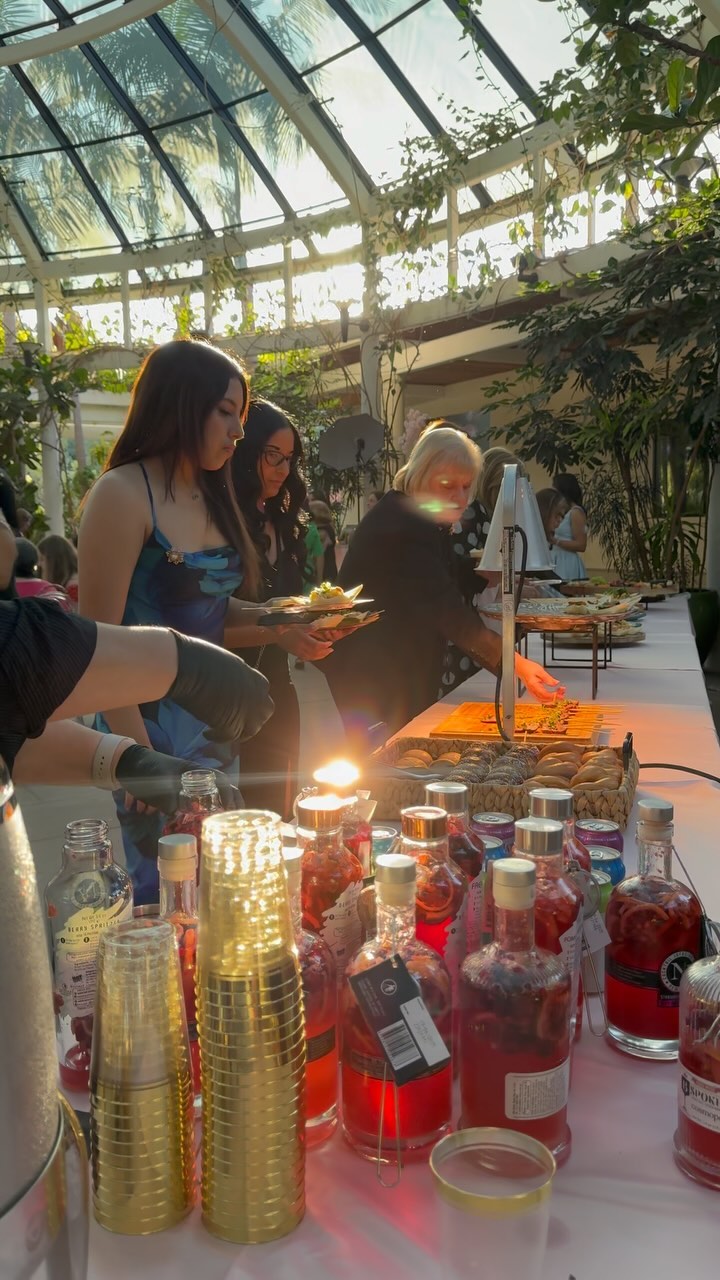Extending an olive branch has long been a metaphor for expressing peace. Extending an antipasto tray filled with olives from Anoush, your
catering service in Los Angeles, on the other hand, is an invitation to try some of nature’s most delicious natural treats. The olive tree is one of the oldest trees on Earth, revered from ancient times through history, religion, and mythology, as a provider of food, potions, and fragrant oils. Native to the Mediterranean region and an integral part of its cuisine, today there are over 800 million olive trees annually producing 20 million tons of olives in countries like Spain, Italy, and Greece, as well as places as far-flung as Australia, South Africa, Chile, and our own California. First cultivated 6,000 years ago, there are olive trees as old as 2,000 years old that are still producing fruit.
Olives
All olives start out yellowish green. Depending upon how many months they are allowed to ripen on the tree, they slowly turn green, then light brown, then a dark purple, and finally, black. You wouldn’t want to eat one off right off the branch, though. By nature, olives are bitter, and require long processes of curing before they attain the flavors we know. Some are cured in water, some in brine, others in lye or oil, and some are dry cured or sun dried. With the addition of spices and herbs, each variety takes on its distinctive character.
Even the most modest grocery store in the Los Angeles area has a wide selection of olives to choose from when you want to add zest to a pasta recipe, pizza, homemade bread, or simply serve with cheese and a bowl of almonds before dinner. When you’re shopping for olives, these are some of the varieties you’re most likely to find:
- Manzanilla. The familiar green olives from Spain, with an addictive, salty flavor. These are the classic Martini olives, and can be found stuffed with pimiento, almonds, bleu cheese, garlic, and a host of other tantalizing condiments.
- Kalamata. Almond-shaped, deep purple olives from Greece, with a smoky, fruity flavor.
- Alexandros. Plump, greenish brown olives from Greece, with an earthy, briny flavor.
- Niçoise. Tiny brownish black olives from France, with a delicate, somewhat tart flavor.
- Picholine. Long, almond-shaped green olives from France, with a lemony flavor.
- Castelvetrano. Bright green olives from Sicily, with a soft texture and mild flavor.
- Bella Di Cerignola. Subtly flavored olives from Italy, found in green, black, and red varieties.
- California black olives. These are the only ones you’ll find in cans rather than bottles. They’re artificially ripened, and have a soft texture and mild flavor. A classic of the traditional Thanksgiving relish tray — you might have worn them on your finger tips when you were a kid.
Olive Oil
When it comes to olive oil, the variety of olive doesn’t matter as much as the technique used in processing it. Over one hundred types of olives are used to produce oil, and in many cases, several types are combined in one product. There are two main categories of olive oil: virgin oil, which is unadulterated, and refined oil, which is virgin oil of lesser quality that has been treated with chemical or physical filters.

Extra-virgin is the highest grade of olive oil. It’s the oil you want when you plan to use it to dip bread, drizzle over prepared food, or use in salad dressing. You may find it in strong, medium, or mild flavors, but each carries the purest essence of the olive’s flavor and aroma. Apart from its culinary qualities, extra-virgin oil also has the highest level of healthful antioxidants. It’s not necessary to use extra-virgin oil for cooking, but it does generally have the highest smoke point of all oils, meaning that it tolerates high heat better than any other. Using it for frying will destroy its finer qualities, though, so reserve it for browning or sautéing, and use a lower-quality olive oil or another kind of oil for frying.
Virgin olive oil is made the same way as extra-virgin, with olives crushed into a mash which is then pressed to extract the oil, but it is not required to meet the same high standard as extra-virgin oil, which calls for the olives to be processed within twenty-four hours of picking. Think of extra-virgin as “fresh squeezed” with all the benefits that brings.
Olive oils labeled simply “olive oil” or “pure olive oil” are often made with processed oils that have less flavor. Olive oils labeled “light” don’t mean they have fewer calories, by the way; it only means that they are processed oils light in color or mild in flavor.
Not all olive oils of any grade taste the same or are the same color. It depends on the type and quality of the fruit, the region it comes from, the weather during the growing season, and the time of harvest — almost the same factors that make one wine different from another.
When buying olive oil, look for one in a dark-tinted glass bottle or in a tin, because exposure to light affects the quality of the oil. Once you’ve got it home, store it away from heat, and re-cap it tightly after you use it; if exposed to air, the oil will degrade and turn rancid. Refrigerating olive oil is not necessary, though it won’t hurt it.
In addition to the array of olive oils you’ll find at the grocery store or Italian deli, there are a number of specialty shops in the greater Los Angeles area that offer you the opportunity to taste a variety of them before you buy them. For more catering or
banquet halls in Glendale CA questions or comment, be sure to contact us. Buon appetito!
 Extra-virgin is the highest grade of olive oil. It’s the oil you want when you plan to use it to dip bread, drizzle over prepared food, or use in salad dressing. You may find it in strong, medium, or mild flavors, but each carries the purest essence of the olive’s flavor and aroma. Apart from its culinary qualities, extra-virgin oil also has the highest level of healthful antioxidants. It’s not necessary to use extra-virgin oil for cooking, but it does generally have the highest smoke point of all oils, meaning that it tolerates high heat better than any other. Using it for frying will destroy its finer qualities, though, so reserve it for browning or sautéing, and use a lower-quality olive oil or another kind of oil for frying.
Virgin olive oil is made the same way as extra-virgin, with olives crushed into a mash which is then pressed to extract the oil, but it is not required to meet the same high standard as extra-virgin oil, which calls for the olives to be processed within twenty-four hours of picking. Think of extra-virgin as “fresh squeezed” with all the benefits that brings.
Olive oils labeled simply “olive oil” or “pure olive oil” are often made with processed oils that have less flavor. Olive oils labeled “light” don’t mean they have fewer calories, by the way; it only means that they are processed oils light in color or mild in flavor.
Not all olive oils of any grade taste the same or are the same color. It depends on the type and quality of the fruit, the region it comes from, the weather during the growing season, and the time of harvest — almost the same factors that make one wine different from another.
When buying olive oil, look for one in a dark-tinted glass bottle or in a tin, because exposure to light affects the quality of the oil. Once you’ve got it home, store it away from heat, and re-cap it tightly after you use it; if exposed to air, the oil will degrade and turn rancid. Refrigerating olive oil is not necessary, though it won’t hurt it.
In addition to the array of olive oils you’ll find at the grocery store or Italian deli, there are a number of specialty shops in the greater Los Angeles area that offer you the opportunity to taste a variety of them before you buy them. For more catering or banquet halls in Glendale CA questions or comment, be sure to contact us. Buon appetito!
Extra-virgin is the highest grade of olive oil. It’s the oil you want when you plan to use it to dip bread, drizzle over prepared food, or use in salad dressing. You may find it in strong, medium, or mild flavors, but each carries the purest essence of the olive’s flavor and aroma. Apart from its culinary qualities, extra-virgin oil also has the highest level of healthful antioxidants. It’s not necessary to use extra-virgin oil for cooking, but it does generally have the highest smoke point of all oils, meaning that it tolerates high heat better than any other. Using it for frying will destroy its finer qualities, though, so reserve it for browning or sautéing, and use a lower-quality olive oil or another kind of oil for frying.
Virgin olive oil is made the same way as extra-virgin, with olives crushed into a mash which is then pressed to extract the oil, but it is not required to meet the same high standard as extra-virgin oil, which calls for the olives to be processed within twenty-four hours of picking. Think of extra-virgin as “fresh squeezed” with all the benefits that brings.
Olive oils labeled simply “olive oil” or “pure olive oil” are often made with processed oils that have less flavor. Olive oils labeled “light” don’t mean they have fewer calories, by the way; it only means that they are processed oils light in color or mild in flavor.
Not all olive oils of any grade taste the same or are the same color. It depends on the type and quality of the fruit, the region it comes from, the weather during the growing season, and the time of harvest — almost the same factors that make one wine different from another.
When buying olive oil, look for one in a dark-tinted glass bottle or in a tin, because exposure to light affects the quality of the oil. Once you’ve got it home, store it away from heat, and re-cap it tightly after you use it; if exposed to air, the oil will degrade and turn rancid. Refrigerating olive oil is not necessary, though it won’t hurt it.
In addition to the array of olive oils you’ll find at the grocery store or Italian deli, there are a number of specialty shops in the greater Los Angeles area that offer you the opportunity to taste a variety of them before you buy them. For more catering or banquet halls in Glendale CA questions or comment, be sure to contact us. Buon appetito! 

























